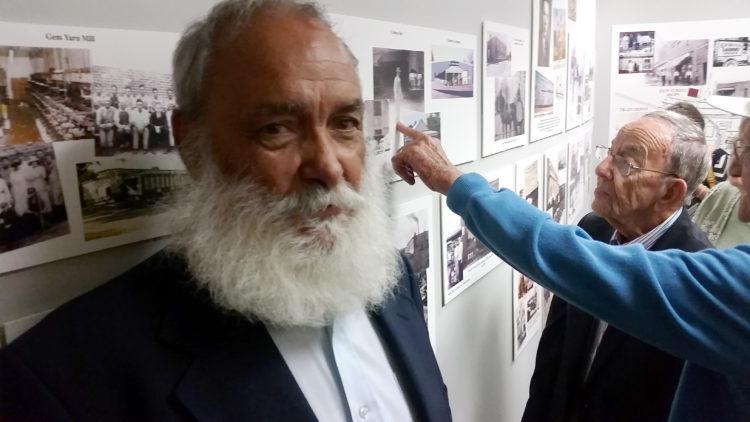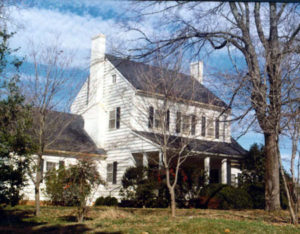
Historic photo collector Jack Conard (above) was there for the opening of a mini-museum in a former office in Town Hall in 2015
Dec. 15. Cornelius has a rich and varied history but there’s really no centralized location where artifacts can be displayed. Town officials seem to think that a museum would be an ideal addition but one may have to wait until fundraising for the Cain Center for the Arts is further along.
Dedicated museum space in the Cain Center is highly unlikely at this point, with space at a premium, says Commissioner Jim Duke.
One of the strongest advocates for a museum is Mayor Woody Washam, whose family has lived here for generations.
“I remain in complete support for a Cornelius history museum which would formally present the beautiful Cornelius story that we have been weaving for many generations,” said the mayor. “We do have many artifacts and pictures spread throughout town that need to have a home for all to enjoy and learn.”
But where would it go in a town where property values are soaring?
Some elements of what could eventually compose a museum actually exist now: There is a history room at Mt. Zion United Methodist Church and photographer Jack Conard has amassed a sizable collection of photographs in his home on North Main. Some have been on display at Town Hall.
Pre-Revolutionary War
The story of Cornelius ranges from the largely intact Potts Plantation recorded “by lease and release” in 1753 to a Revolutionary War encampment on Spring Street, to the Civil War which is commemorated by the Confederate Soldier’s Monument on Zion Avenue.

Potts Plantation House
Back in 1976, the Charlotte Mecklenburg Historic Landmarks Commission had this to say about the Potts Plantation: “It is our belief that nowhere in Mecklenburg County does there remain such a lovely tribute to perseverance, loyalty, and love of country as displayed by the generations of the Potts Family of North Mecklenburg. Robert Potts, Jr.’s House, furnishings, papers, and original plantation all still intact — always family owned and occupied – never abandoned or ‘Gone with the Wind.’”
Interesting side note: John Potts was a relative of Isaac Potts of Valley Forge, Pa. Gen. Washington used his home as headquarters.
Potts descendants live on the Cornelius property to this day.
Slavery is part of the history
There is the slaves’ story to tell as well, not just on the plantations but where they settled in the decades after the Civil War. One such place is Smithville, where generations of descendants have lived. There’s even a Rosenwald School near the center of Smithville. Booker T. Washington and Julius Rosenwald, the president of Sears Roebuck, built state-of-the art schools for African-American children across the South, one of the most significant advances in black education in the early 20th century.

Rosenwald School
A history of Mecklenburg County by historian Dan Morrill says “Slavery was a fundamental component of the social hierarchy of pre-Civil War Mecklenburg County.”
In 1860, slaves comprised roughly 40 percent of the local population—6,800 out of 17,000—making Mecklenburg County one of the highest in terms of the number of “bondspeople” in the North Carolina Piedmont, Morrill writes.
Cornelius was a farming community connected by churches long before the mills came more than a century ago.
Some components of the town’s mill history may be contained in the new Cain Center for the Arts, including wood from the old cotton gin building and, possibly, the cotton scales.
Cotton played a major role in the development of 20th century Cornelius. In fact, Joseph Benjamin Cornelius provided the capital for the first mill. The town, incorporating in 1905, recognized his role by naming it after him.
Town Commissioner Duke said there must be “a ton of things tucked away in homes and businesses” which could furnish a museum, ranging from school bells to photographs.

The cotton scale
Telling a story
Taken together, they tell the story of many ways of life through the centuries.
“We have a significant historical tie to the Civil War era and an entire history of our Black community dwelling in the homes and hearts of Smithville,” Duke said.
Mayor Washam said another option is a museum in the future which is actually housed at one of the towns’ historic buildings or homes established as a public/private venture and supported by the historic faith communities in town.




